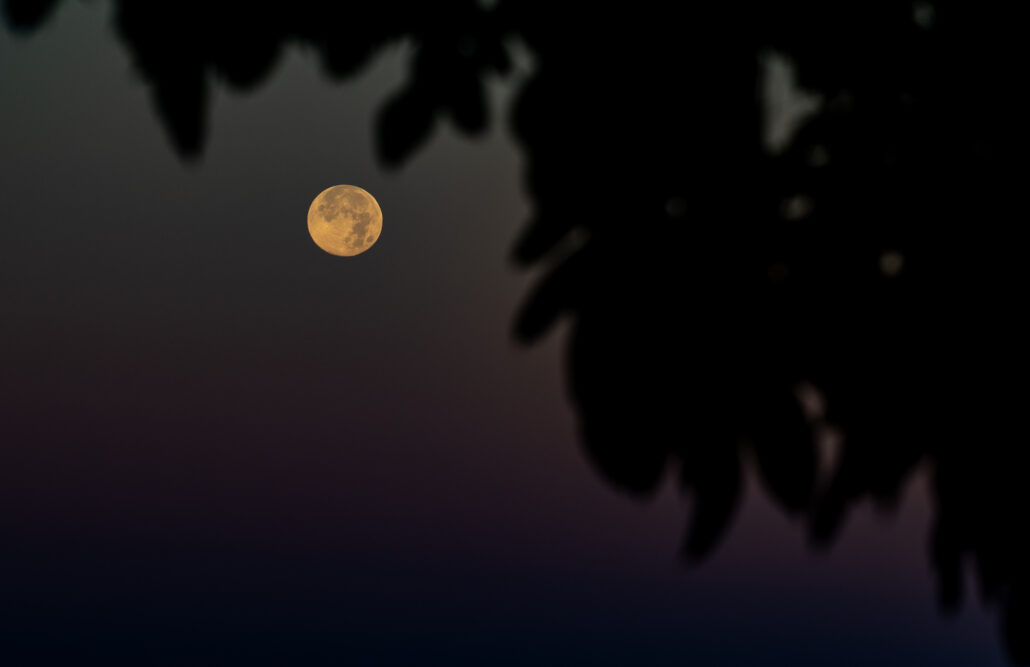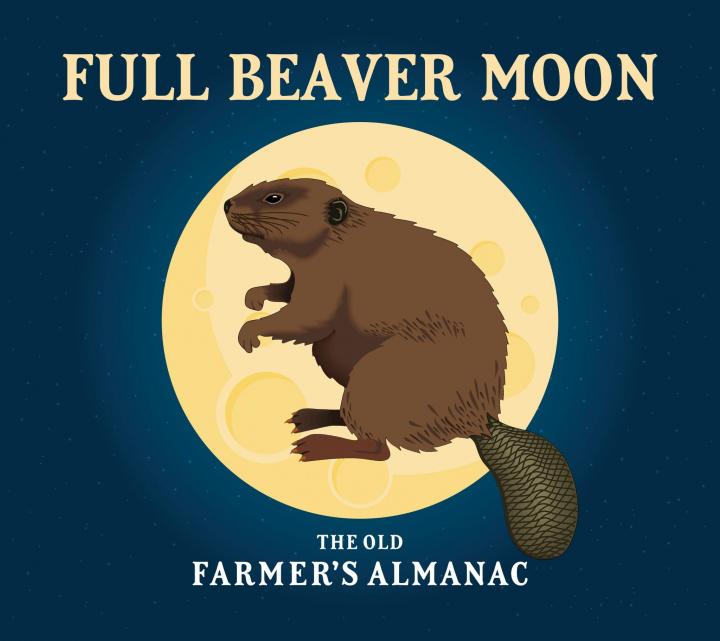Annular Solar Eclipse 2023
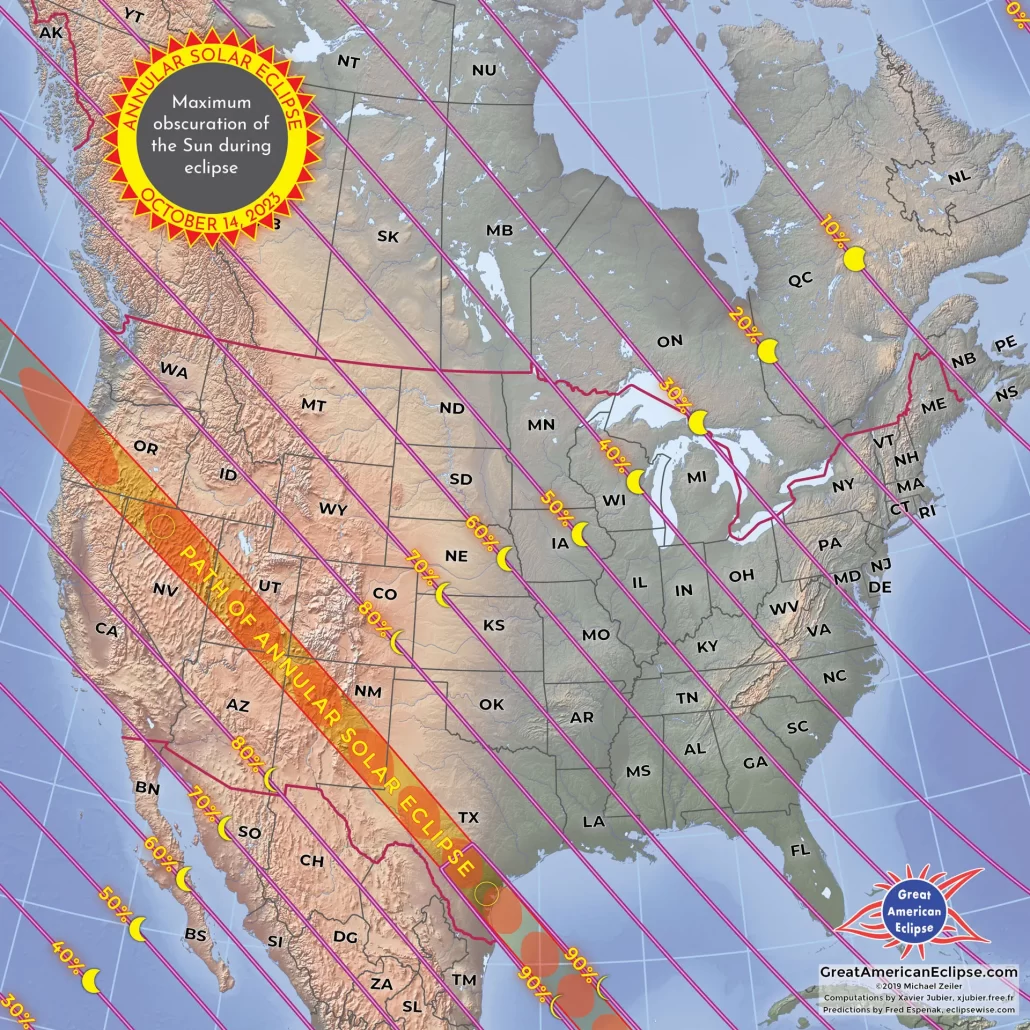
The annular solar eclipse in North America begins in Oregon at 9:13 am (PDT) today and ends in Texas at 12:03 pm (CDT) before traveling out of the country.
During the annular solar eclipse, the moon will pass between the sun and Earth, casting a shadow on the planet. A “ring of fire” is created when the moon only partially covers the sun’s disk, leaving a sliver of sunlight around the moon, according to space.com.
To find out more about how to watch the solar eclipse, check out this great interactive map from NASA.
Shine On
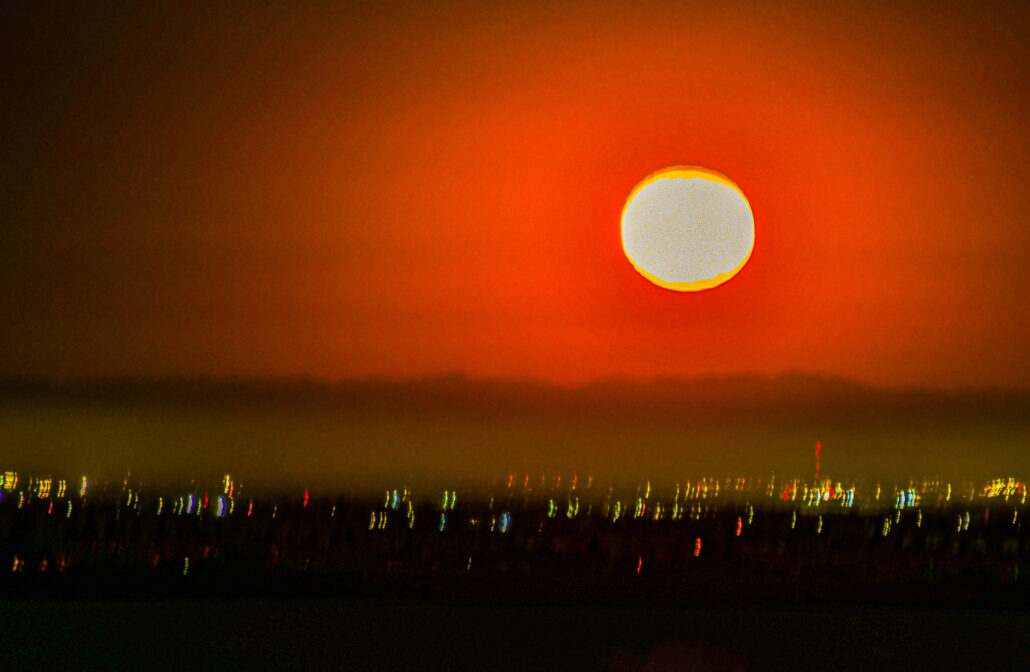
Friday morning’s Full Corn Moon will be the fourth and final supermoon of 2023.
Because a supermoon’s orbit is flatter than normal, the moon is closer to Earth and appears larger. This phenomenon is exaggerated by the atmosphere, as it rises and sets.
Once in a blue moon, it is full twice in a month, ergo the expression.
CLICK HERE to read how to photograph the Harvest Moon on September 29 (the full moon closest to the autumnal equinox). The above image was not taken using any of those techniques, but was captured as an abstraction of what will be seen. The following two shots were taken using the techniques.

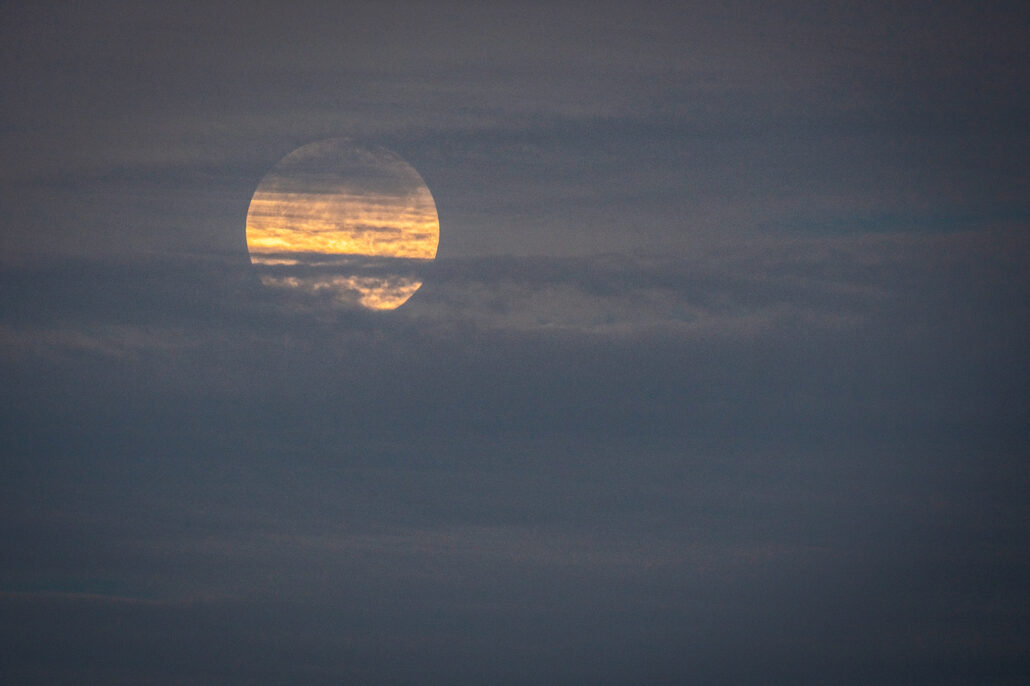
Full Beaver Moon

November’s Beaver Moon is the last full moon of August.
Last night, it coincided with a prenumbral eclipse of the moon. That’s when the moon passes within the Earth’s shadow. A prenumbral eclipse is not as dramatic as a full eclipse of the sun, as the moon only gets a little darker as it passes within the prenumbra (Earth’s shadow).
The Old Farmer’s Almanac tells us that the “Full Beaver Moon” was the term used by native Americans who observed that the November full moon marked when beaver would retreat to their winter lodges, “having laid up sufficient stores of food for the long winter ahead.” It was also the time to trap beaver, as they would have a heavy winter pelt.
I arose early to photograph the full beaver moon and concluded, as I stood in my bathrobe, pajamas and slippers while scanning the western horizon, that surely the moon was named for the beaver, but not because they’d prepared for winter, but because they were smart enough to stay warm and cozy in their lodges and not stupid enough to get up before dawn to look at the moon.

Hunter’s Moon

“Hunter’s moon is mentioned in several sources as the Anglo-Saxon name for the Full Moon of October. This is the month when the game is fattened, and it is time to start preparing for the coming winter. Traditionally, this included hunting, slaughtering and preserving meats for use in the coming winter months.
“Other names are Travel Moon and Dying Grass Moon. Some also called it Blood Moon or Sanguine Moon, which also refers to the hunting season. However, this name should not be confused with the term Blood Moon to describe a Total Lunar Eclipse.”
TimeAndDate.com
- January – Wolf moon (alt: Moon After Yule, Ice moon, Snow moon)
- February – Snow moon (Hunger moon, Chaste moon)
- March – Worm moon (Crow moon, Crust moon, Sap moon, Chaste moon, Lenten moon)
- April – Pink moon (Sprouting grass moon, Fish moon, Hare moon, Egg moon, Paschal moon)
- May – Flower moon (Corn planting moon, Milk moon)
- June – Strawberry moon (Hot moon, Mead moon, Rose moon)
- July – Buck moon (Thunder moon, Wort moon, Hay moon)
- August – Sturgeon moon (Green corn moon, Barley moon, Fruit moon, Grain moon)
- September/October – Harvest moon (full moon closest to autumnal equinox)
- September – Corn moon (Full corn moon, Barley moon)
- October – Hunter’s moon (Dying grass moon, Blood or Sanguine moon – not to be confused with the Blood moon marking a total lunar eclipse)
- November – Beaver moon (Frosty moon, Oak moon, Mourning moon)
- December – Cold moon (Oak moon, Moon Before Yule, Wolf moon)
This October’s Hunter’s moon is also being referred to as a Blue moon, which is the second full moon in a month. Such moons are so infrequent that the expression “once in a blue moon” expresses their rarity.
However, the first full moon this month was masked (pun intended) by atmospheric smoke. Now, with hazy air lending a golden-orange cast to the moon, this is the first full moon truly seen this month, so we prefer thinking of it as the Hunter’s moon.

Satellite Comparison
During the time Inyo National Forest was closed, Lyle Gordon was looking at Sentinel Satellite imagery. A golden patch of color caught his eye near Tres Plumas Meadow at 10,000′ in the White Mountains (roughly 37.561, -118.156), near the Cottonwood Basin.
So, he looked at the same location two weeks earlier and, Voilà!, the same foliage was green.
Lyle, or should we say the Sentinel Satellite, scores a First Report for Tres Plumas Meadow and for the White Mountains, plus satellite imagery is a first for CaliforniaFallColor.com.
He guessed the foliage was most likely Quaking aspen or willow. He also found smaller groves at McAfee Creek to the north (37.6049, -118.1940) and to the south along Crooked Creek (37.4954, -118.1433).
Lyle reports, “There are some visible groves in the Sierra but they are narrow (along creeks) and harder to see. Further afield in the Monitor Range near Table Mountain there is another large grove around 10,000′ that shows nice color from space.”
Lyle’s email was one that got lost with the email glitch in late September, but which resurfaced a couple of days ago.
In keeping with the newly created U.S. Space Force, CaliforniaFallColor.com commissions Lyle Gordon as the first “Space Cadet” of the California Fall Color Space Force.
This title will likewise be granted to any other person who uses satellite imagery to find fall color in California. Sorry, no Flash Gordon decoder ring comes with the title.


